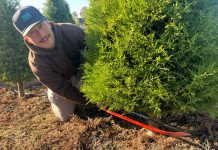With the onset of the season of snow, rain, fog, and
weather-related auto accidents, AAA Northern California urges
motorists to get their vehicles ready and refresh their winter
driving skills for the cold, wet months ahead.
With the onset of the season of snow, rain, fog, and weather-related auto accidents, AAA Northern California urges motorists to get their vehicles ready and refresh their winter driving skills for the cold, wet months ahead.
“Although summer auto crashes are more often fatal, fall and winter have the highest number of weather-related crashes, deaths and injuries,” said Matt Skryja, AAA Northern California spokesman. “The combination of poorly maintained vehicles and driver error, along with loss of visibility and slick roads, causes thousands of preventable crashes each year.”
Preparing a vehicle is the first step in improving the chances of safe winter driving. Here are some ways to winterize a car:
Check the systems. Make sure your brakes, defroster, heater, exhaust system, and lights work properly. Change the blades in your wipers and check the level and condition of the antifreeze.
Inspect the tires. Good tread allows the water to escape from under the tires and increases traction. Keep tires at proper pressure. Low pressure allows the tread to squeeze together and reduces traction. Too-high pressure prevents the tread from contacting the road thoroughly.
Keep a full gas tank. In winter it may become necessary to change routes, idle for long periods of time, travel slowly, or turn around in a storm.
Keep the windshield and windows clear. Have a snow brush and ice scraper in the vehicle. Use the car’s defroster or a clean cloth to “defog” the inside of the windows.
Carry an emergency kit. Items to include in the kit are a flashlight, first-aid kit, flares or emergency triangles, window washer fluid, tool kit, blanket or sleeping bag, gloves, paper towels, drinking water, and extra food. Also include abrasive material such as sand, salt or non-clumping cat litter, and a small shovel to free the vehicle if it becomes stuck.
Include chains. Remember, chains must be installed on the “drive” wheels of the vehicle.
Carry an extra car key. Many motorists lock themselves out of their vehicles when installing chains or attending to weather-related problems.
It’s not enough to prepare your vehicle for winter, according to AAA, which says drivers should adjust their speed for the weather and slow down.
Keep in mind that your vehicle needs at least three times more distance to stop on slick roads. Also, learn to “read” road conditions to anticipate a hazard in time to react safely.









